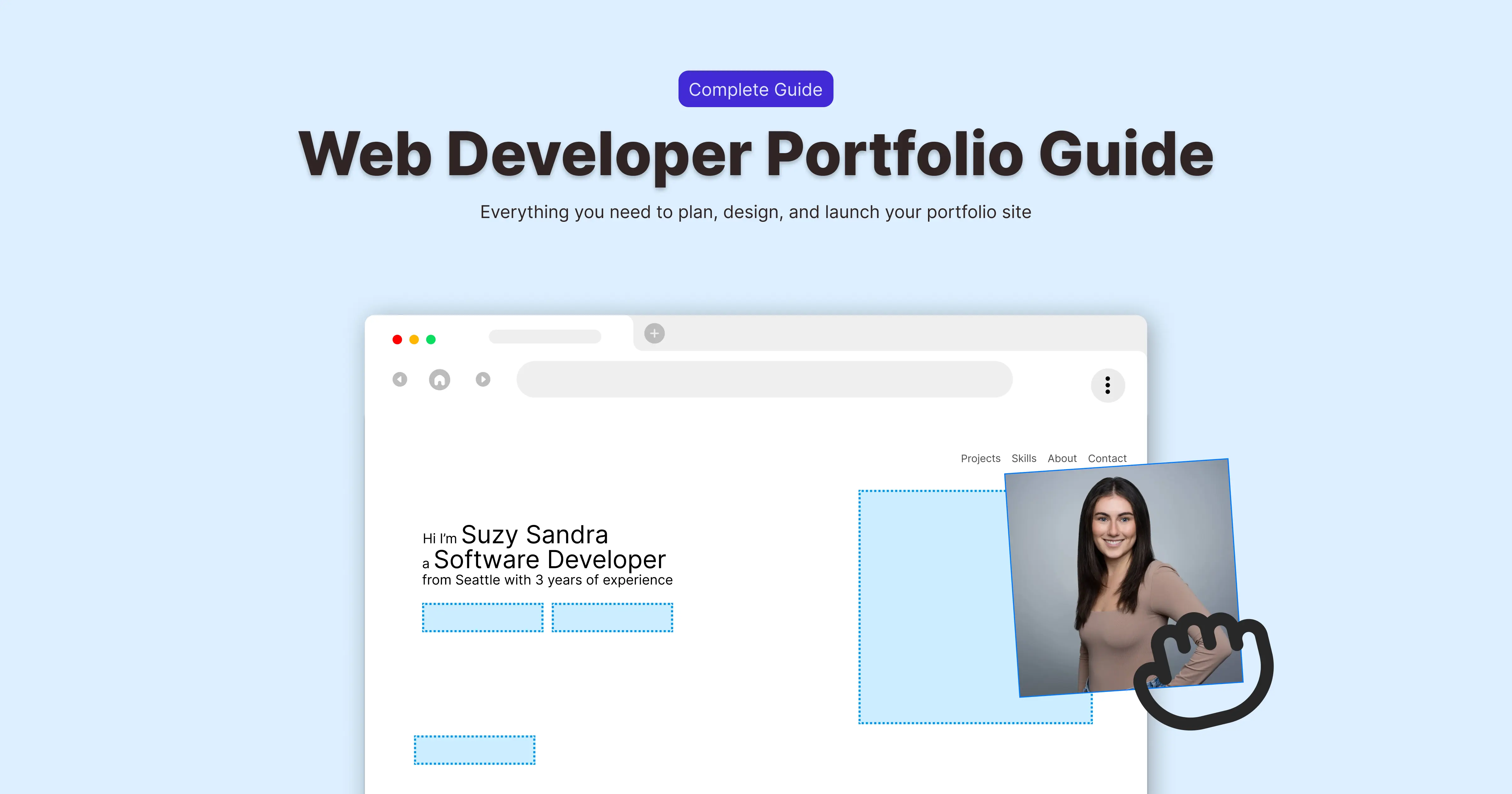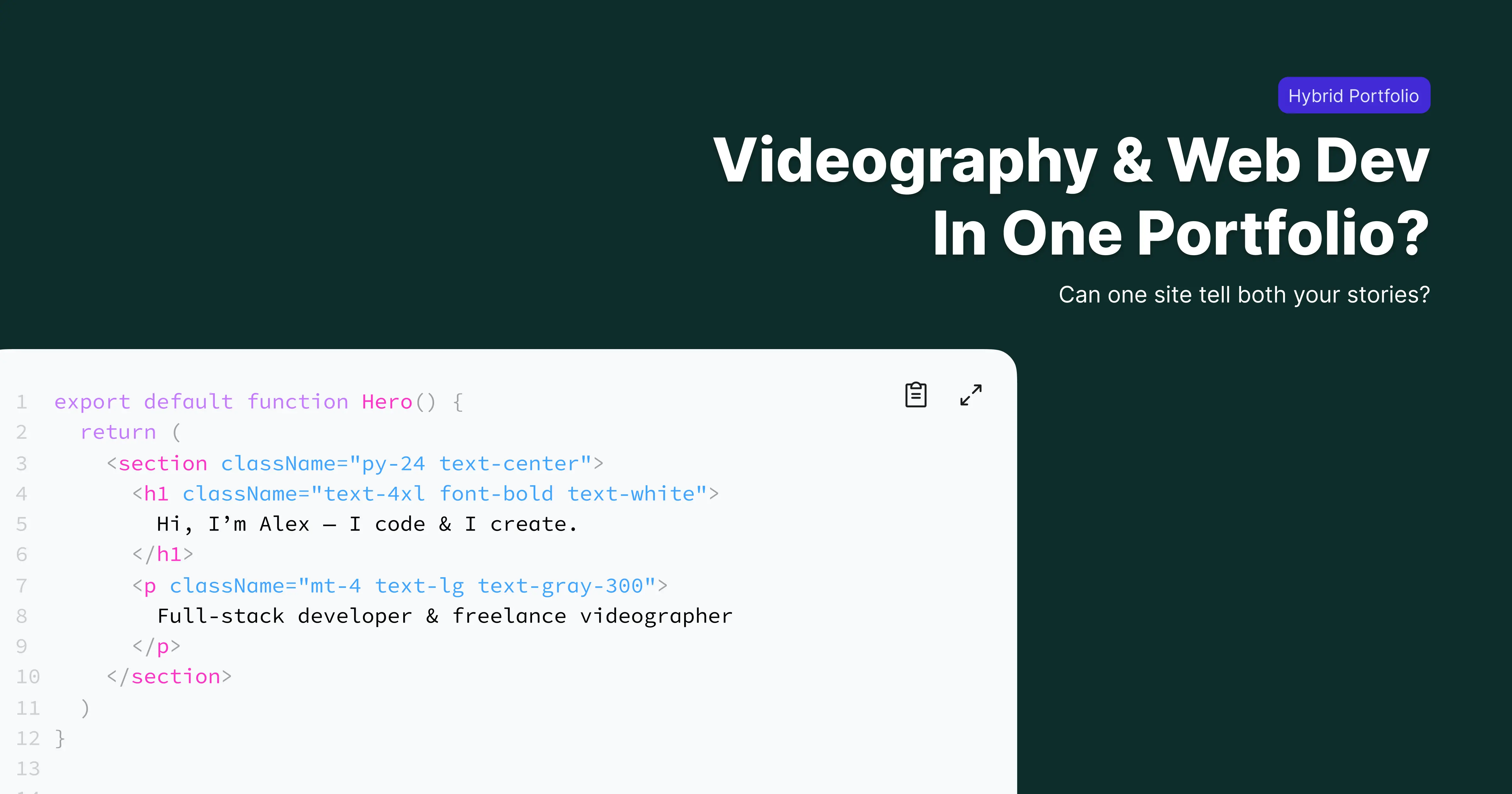A portfolio isn’t just a gallery of your projects—it's a personal pitch, a storytelling platform, and often your first impression to potential employers or clients. Whether you're just starting out or you're a seasoned developer, a strong portfolio can help you land opportunities, build trust, and stand out in a competitive field.
This guide walks you through everything you need to create a standout portfolio—from planning and project selection to writing, design, and long-term upkeep.
Clarify Your Purpose
Before writing code or picking fonts, ask yourself:
- Are you aiming for your first job?
- Do you want to attract freelance clients?
- Are you showcasing a personal brand or niche specialty?
Your purpose determines everything—from the tone of your bio to the types of projects you feature. Be intentional from the start.
💡 Tip: Think of your portfolio as a tailored resume. Not everything you’ve built needs to be shown—only what aligns with your goals.
Want more help choosing your direction? Read How to Define Your Portfolio's Purpose.
Choose the Right Projects
You don’t need a dozen apps to impress—two to four well-documented, thoughtfully chosen projects will do more for you than a long list of unfinished demos.
Ideal project traits:
- Solves a real problem or mimics a real-world scenario
- Shows off core skills: layout, interactivity, API integration, authentication, etc.
- Demonstrates end-to-end thinking (UI, logic, structure)
Examples:
- A blog CMS with a markdown editor and preview pane
- A productivity dashboard pulling live data from APIs
- A community recipe app with user auth and upload features
Make sure the technologies you want to be hired for show up here. If you’re applying for React jobs, show strong React work.
Need help choosing what to build? See Best Project Ideas for Web Portfolios.
Plan the Structure
The best portfolios are easy to navigate and tell a story. A clear structure builds trust and makes you more memorable.
Recommended layout:
- Home: Quick intro, maybe a hero image or tagline
- About: Who you are, what you’re about, and what you’re looking for
- Skills: Your tech stack, tools, and workflows
- Projects: Showcase with case studies, not just screenshots
- Contact: Simple, accessible, and ideally a contact form
Optional:
- Blog: Great for thought leadership and SEO
- Resume: Downloadable PDF or detailed section
Want to dive deeper into layout decisions? Read Portfolio Structure that Converts.
Nail the Design
You don’t need to be a designer to make a clean, professional portfolio. Use simple layouts, clear spacing, and consistent styles.
Design considerations:
- Color scheme: Use 2–3 colors max. Tools like Coolors or Tailwind palettes help.
- Typography: Choose one or two fonts. Prioritize readability.
- Responsiveness: Your portfolio must work on mobile, tablet, and desktop.
- Performance: Optimize images and avoid overloading animations.
💬 A fast-loading, readable site will always beat a flashy but broken one.
For a deeper breakdown, check out Design Tips for Developers.
Build Meaningful Project Showcases
Each project should tell a story—not just what you built, but why and how.
For each project, include:
- Title and short description
- The problem it solves
- Your role and process
- Technologies used
- Challenges and how you overcame them
- Screenshots or demo videos
- Links to live demo and GitHub repo
⚠️ Only include live demos that are working. A broken link hurts more than no link at all.
Want examples? See our showcase: webportfolios.dev/portfolios/explore
Polish the Details
This is where good portfolios become great.
Final touches:
- Use a custom domain name (e.g.
yourname.dev) - Add a favicon and meta images for social sharing
- Set up SEO basics: meta title, description, Open Graph tags
- Add analytics (like Plausible or Google Analytics)
- Use accessibility best practices
Small touches go a long way. Read Polish Your Portfolio: Small Fixes That Impress.
Keep It Fresh
A stale portfolio makes it look like you're not active. Set a reminder every 3–6 months to:
- Update your stack and skills
- Add new projects or blog posts
- Refresh the layout if needed
- Check and fix any broken links or live demo issues
Bonus: What Makes Portfolios Stand Out?
- Specialization: Show that you know your niche (e.g. frontend animations, backend APIs, accessibility)
- Writing: Clear, confident writing shows communication skills
- Originality: Avoid cookie-cutter templates unless heavily customized
- Clarity: Clean UX, smart structure, and intentional choices
✨ Your voice, your style, and your goals should be clear within the first 30 seconds of viewing your site.
Conclusion
A portfolio isn’t a one-time task—it’s a living, evolving representation of your work and value as a developer. By focusing on quality over quantity, telling clear project stories, and maintaining a strong personal narrative, you'll stand out far more than someone with a flashy template but no substance.
Explore examples and get inspired at webportfolios.dev—a collection of real-world developer portfolios you can browse, learn from, and even upload your own to share.

